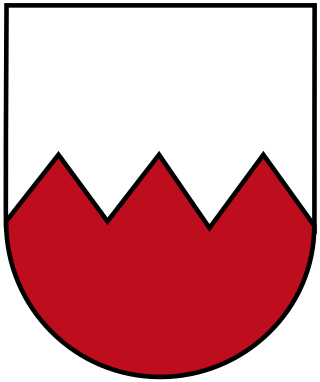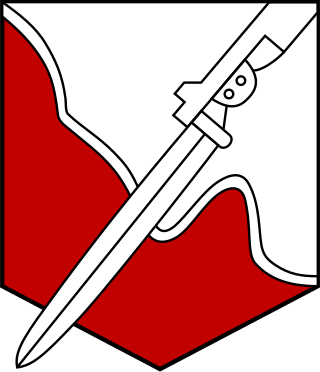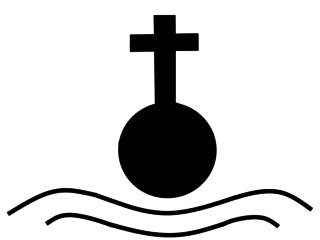
The 1st Panzer-Division was an armoured division in the German Army during World War II.

The German 73rd Infantry Division or in German 73. Infanterie-Division was a German military unit which served during World War II. The division consisted of more than 10,000 soldiers, primarily of the infantry branch, with supporting artillery. The division was only semi-motorized and relied on marching for the infantry units and horse-drawn transport for most of the support equipment, especially the artillery.

The 13th Panzer Division was a unit of the German Army during World War II, established in 1940.

The 334th Infantry Division was a German Army infantry division in World War II. Originally formed in November 1942, it surrendered to the Allies at the conclusion of the Tunisian Campaign in May 1943. The division was reconstituted on 3 June 1943 in France within the 1st Army, with the staff of the 80th Infantry Division as well as remnants of the old division and replacement units. It spent the remainder of the war serving on the Italian Front.

The 212th Infantry Division was a German infantry division that fought in World War II. It was destroyed in Lithuania, and reconstituted as the 578th Volksgrenadier Division before being renamed the 212th Volksgrenadier Division.

The 3rd Infantry Division was an infantry division of the German Army that fought in World War II. The division was established under the cover name Wehrgauleitung Frankfurt in 1934 by expanding the 3rd Division of the Reichswehr. It was redesignated Kommandant von Frankfurt shortly afterward, and took on its bona fide name when the formation of the Wehrmacht was announced in October 1935. In March 1939 the division took part in the invasion and occupation of Czechoslovakia.
The XXVIII Army Corps was a corps which served in Nazi Germany's Wehrmacht during World War II. The corps was created on May 20, 1940 in Wehrkreis III. During the war, the corps was subordinated to the German 6th, 16th, 18th, and 3rd Panzer Armies. In 1945, the corps was briefly named Armeeabteilung Samland. The corps fought in Samland until annihilated in late April 1945.

The German 5th Infantry Division was formed in October 1934 and mobilized on 25 August 1939. The division's troops were garrisoned in Konstanz, Ulm, and Freiburg. When formed, the division consisted of the 1st, 2nd, and 3rd battalions of the 14th, 56th, and 75th Infantry Regiments, the 1st, 2nd, and 3rd Battalions of the 5th Artillery Regiment, the 1st battalion of the 41st Artillery Regiment, and assorted 5th Division support units.

The 26th Infantry Division was a pre-World War II German Infantry Division of the 1st mobilisation wave. It was mobilised for World War II on September 26, 1939, disbanded on September 10, 1944, near Radom and reformed as the 26th Volksgrenadier Division on September 17, 1944, near Poznań by absorption of the new 582nd Volksgrenadier Division of the 32nd mobilisation wave. Remnants of the Division entered U.S. captivity in the Harz region in 1945.

The 32nd Infantry Division of the German Army was mobilized on 1 August 1939 for the upcoming invasion of Poland. At that time, it consisted of the usual German Infantry Division elements: three infantry regiments of three battalions each, one three-battalion regiment of light artillery, one battalion of heavy artillery, a Panzerjäger (anti-tank) Battalion, a reconnaissance (Aufklärungs) Battalion, a Signals Battalion, a Pioneer (Engineer) Battalion, and divisional supply, medical, and administrative units.

The 83rd Infantry Division,, was a German reserve and security formation during World War II.

The 87th Infantry Division was an infantry division of the German Army during the Second World War, active from 1939 to 1945.

The 97th Jäger Division was a light infantry Division of the German Army during World War II. It can trace its origins to the 97th Light Infantry Division which was formed in December 1940. It was then redesignated the 97th Jäger Division in July 1942.

The 45th Infantry Division was an infantry division of the army of Nazi Germany during World War II. Towards the end of the war, the division was reassembled into a second iteration, the 45th Volksgrenadier Division

The 93rd Infantry Division was a German infantry division that was formed in the fall of 1939. The division fought in the Second World War in both the Battle of France and on the Eastern Front. It was ultimately destroyed by the Red Army in March 1945 while defending East Prussia.

The 31st Infantry Division was a German infantry division of the Army during World War II. It participated in the invasion of Poland in 1939 then the invasion of France and the Low Countries in 1940. As part of Panzergruppe 2. of Army Group Centre, it was involved in the invasion of the Soviet Union in June 1941. After hard fighting throughout 1941 and 1942 it joined the 9th Army and fought in the Battle of Kursk in July and August 1943. Along with the rest of the 9th Army, the division conducted a fighting withdrawal for the remainder of 1943, during which it sustained heavy casualties. In the early stages of the Soviet Operation Bagration of June to August 1944, the 31st Infantry Division was destroyed, a fate which subsequently befell most of Army Group Centre. The division was officially disbanded on 18 July 1944.

The 34th Infantry Division,, was a German military unit that fought in the Battle of France and on the Eastern Front during World War II. The division was first formed following the expansion of the army under Adolf Hitler's leadership, but finally disbanded following their surrender to the Americans in Italy.

The 267th Infantry Division was a German division in World War II. Called the 'Horsehead' division because of its emblem, it took part in the Invasion of France in 1940, and Operation Barbarossa in 1941. The division was encircled and destroyed in July 1944.

The 214th Infantry Division was a German division in World War II. It was formed on 26 August 1939.
The following units and commanders participated in the Lorraine campaign from September 1 to December 18, 1944.


















